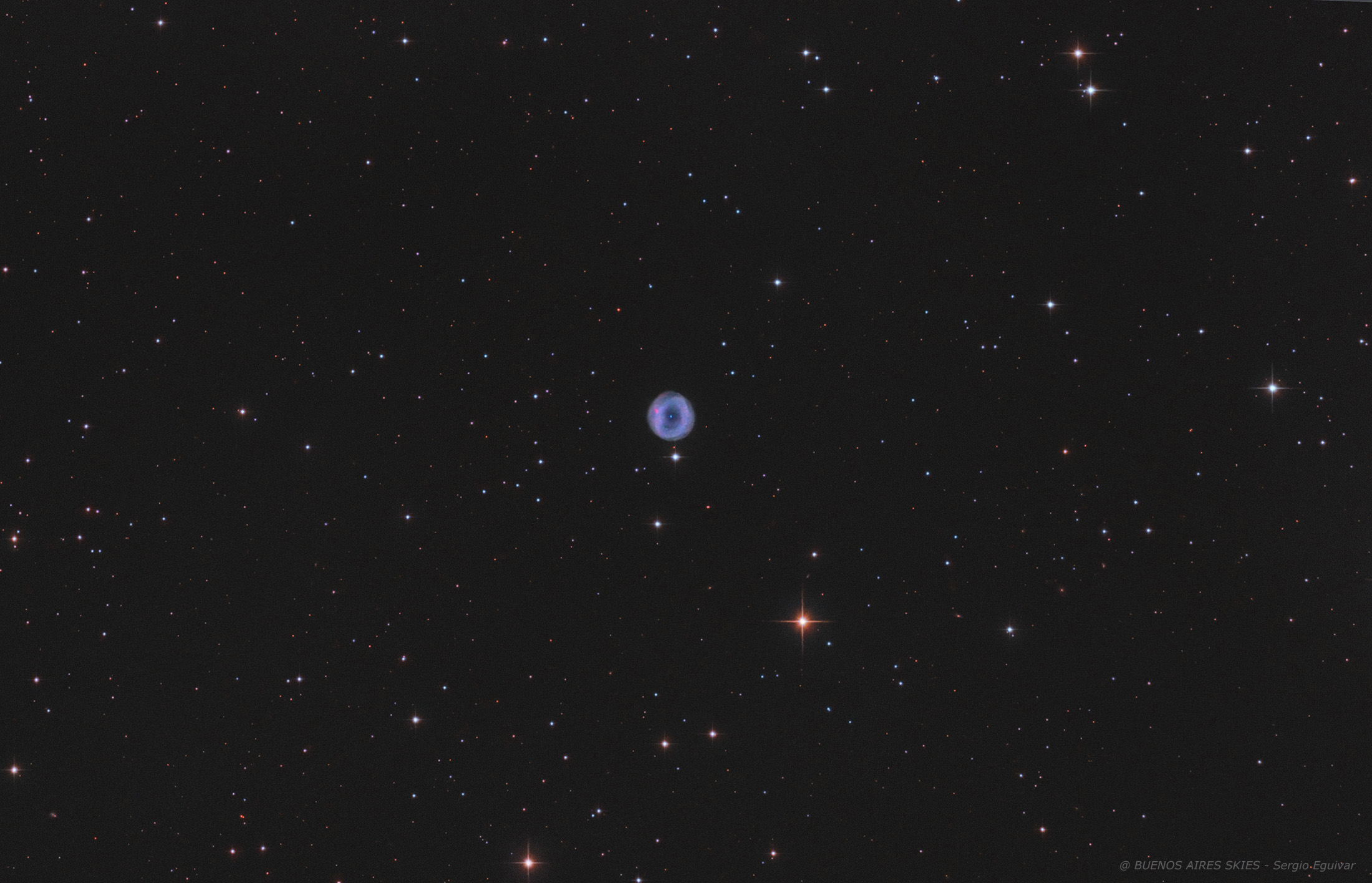
| HOME |
IC 5148
PLANETARY NEBULA IN GRUS (THE CRANE)
(Image centered at: ra 21 h:59 m / dec - 39º 23')

August - 2024, Home Backyard in Martinez, Buenos Aires, Argentina
DATA
TYPE: PLANETARY NEBULA
APPARENT DIAMETER: 2.3 arc minutes
APPARENT MAGNITUDE (V): 11
DISTANCE: 3,000 light years
IMAGE INFORMATION
INSTRUMENT: 6" ORION OPTICS UK (Ultra Grade Optics) w/Sky Watcher Coma Corrector (0.9x) working at at f4.5
CAMERA: QHY 183 MONO
MOUNT: VIXEN GDPX, OAG with Starlight Xpress Lodestar
FILTERS: BAADER LRGB Set ANTLIA 0iii & HA
SKY CONDITIONS: urban skies - Bortle 8
EXPOSURES: LHAOIIIRGB (60,60,90,45,45,45)
OBJECT DESCRIPTION AND IMAGE SESSION
IC 5148 is a peculiar Planetary Nebula that can be found in a rather desolate field at 77 minutes towards the west of 4.47 magnitude Lambda Grus. The object presents at almost perfect circled shape and some internals structures where revealed in above image. With a relative big apparent size, the nebula appears to be very dim but also dense with a opaque color. IC 5148 is also nicknamed as the Spare Tire Nebula. With small telescopes, this nebula looks like a bright central star with an outer ring. The mesmerizing layers of gas are faint. They are almost undetectable without the use of larger telescopes. Around the time IC 5148 was discovered by astronomers in 1894, researchers coined the term planetary nebula to refer to these giant gaseous balls that looked like giant planets. Today we know that these balls are in fact stellar remnants.
At the center of IC 5148 is a white dwarf, the hot core of the dying star, surrounded by asymmetrical gaseous ‘blooms’ and a faint halo ring. The predecessor of the white dwarf was likely a star of a similar mass to our Sun. At the end of that star’s life, the internal pressure imbalance resulted in the star swelling up into a red giant. As it grew, the outer layers of the gas and stellar material were pushed into space to form the nebula we see today.
Due to the short exposures taken and the brightness of the home urban sky, there were no detectable outer halo. Deeper exposure shows a faint halo that goes up to 6 arc minutes in diameter.